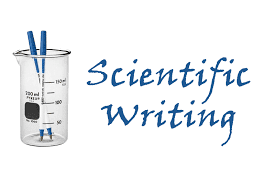As a researcher or scientist, your way to convey your message to other scientists, researchers, and the entire world is through scientific writing. Your readers must deeply understand your message, procedures, limitations, conclusions, and every detail in your scientific paper. And you seldom achieve this without applying the principles of good writing and the appropriate structuring of your scientific paper. So, let us start with the scientific paper structure: Abstract, Introduction, Methods, Result, Discussion, and Conclusion.
Introduction
The introduction gives a chance to non-specialists to understand the topic broadly. Starting with the general aspects of your topic is necessary for the introduction section. Then, narrow the scope step by step, and mention what other scientists and researchers have reached in this area. And remark the scientific gaps in their researches and show how your research will reveal this scientific gap. Finally, mention your research question at the end of the introduction section. The structure of your introduction resembles the inverted pyramid; the base of the pyramid provides a broad view of the topic, and it narrows down till it ends with your research question.
Methods
In the methods section (methodology), accurately explain the procedures and methods in detail so anyone can repeat your steps and reach the same result. Don’t forget to mention the details of the used equipment and its models. In case you follow the same method of another paper, cite it and explain the general steps of its methods without going through many detail. But if you change any step in the procedures, explain it in details. And remember remarking any limitations related to your methods. For proper organization, classify the methods section to subheadings (related to each procedure). And to avoid forgetting the details of your procedures, write the methods section while you’re performing your experiment. And don’t forget to use the past tense when you write this section.
Results
The result section includes the ultimate results of your research paper. You can write the result section together with the discussion section, or write it in a separate section. And don’t repeat the presented data in the tables and graphs in this section. Just summarize it and refer to these tables and graphs for more details. In case your result section contains many details, divide it to subheadings.
Discussion
After reminding the reader with your research questions, clarify how your research can answer this question, and fill the existing scientific gap. The discussion section provides a full view of the research story and connects the introduction section with the result section as well. Cite papers that support your research and also that disagreed with your idea or hypothesis with proper explanation and interpretation.
Conclusion
The conclusion section summarizes the outcome of your research and represents the significance of your study, including new insights that arose from your research. The conclusion section is usually written as a part of the discussion section.
Abstract
Although the abstract is the first section of your paper, you should write it after finishing the other sections of your research paper. The abstract gives a brief view of the whole research story, including the most important information in the introduction, methods, results, and conclusion section. Because your readers may decide either to open your research paper or not from the abstract, highlight the importance of your research, explain the basic techniques of your procedures, mention your results in a quite detail, and add a brief conclusion of your research. And remember to limit the number of words of your abstract to about 250 words.
Finally, during scientific writing, try to convey your message in a simple, concise, and clear way so your readers can easily understand your message without confusion. And after finishing your paper and before sending it for journal submission, ask a friend for a peer-review to highlight the points of weakness in your research paper. And don’t forget to check the submission guidelines of the relevant journal to avoid paper rejection.

